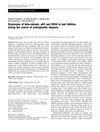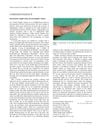Experiments in Raman Spectroscopy on Hair Follicles from Females with Androgenetic Alopecia
June 2012
in “
International journal of scientific research
”
TLDR Hair follicles in androgenetic alopecia show no chemical changes, only size reduction.
This study explored the use of Raman micro-spectroscopy (RMS) to analyze hair follicles in females with androgenetic alopecia, a common condition characterized by hair thinning and loss. The research aimed to identify differences in the chemical composition of hair follicles from different scalp regions. The findings indicated that the Raman spectra of hair follicles from the occipital and frontal areas were similar, suggesting that the miniaturization process in androgenetic alopecia did not involve structural changes in the hair follicles beyond physical dimension alterations.






